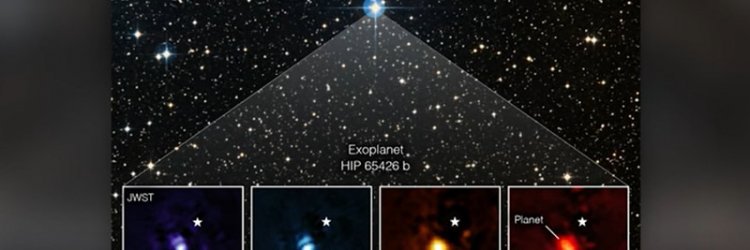Astronomers captured a direct picture of a planet outside the Solar System with the James Webb Telescope
The mass of a giant exoplanet is 6-12 times more than Jupiter

Astronomers have captured the first direct picture of an exoplanet (a planet outside the Solar System) with the James Webb Telescope. The mass of this giant gaseous planet is six to 12 times that of Jupiter. This planet named HIP 65426-b is 150 to 200 million years old. This planet is still a 'baby' compared to Earth's four and a half billion years old. This planet is located at a distance of 385 light years from our Earth.
This planet was seen in different bands of infrared light from James Webb. This telescope observes space in infrared light, which is invisible to the human eye. Sasha Hinckley, associate professor of physics and astronomy at the UK's University of Exeter, said this is a moment of change not only for James Webb but for astronomy as a whole. This exoplanet was first discovered in 2017 with the help of the European Southern Observatory's telescope and special equipment from Chile. This instrument photographed it through short infrared waves.
James Webb's ability to see long infrared waves has presented an absolutely unique picture to the world. Scientists are analyzing data from James Webb associated with HIP 65426-b. This planet is about 100 times farther from its host star.
A few days ago James Webb took a colour photo of Jupiter. Auroras (polar lights) were being seen in this picture at the poles of the planet Jupiter. Apart from this, the faint ring of Jupiter was also visible in the photo released by NASA. Jupiter's Great Red Spot was also visible in the picture. It is a storm that is bigger than the size of Earth. In the picture, however, this storm of red colour was looking white.
